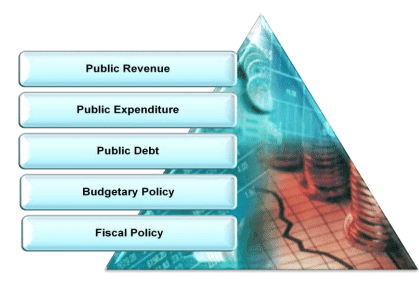Revision Notes: Meaning and Scope of Public Finance | Economics Class 10 ICSE PDF Download
Meaning of Public Finance
Public finance, as defined by Professor Dalton, pertains to the income and expenditure of public authorities and the adjustment between the two. The sources of income include tax revenue and non-tax revenue.
Scope of Public Finance

Public finance involves the methods of raising and allocating funds for various government activities. The important branches of public finance include:
- Public Revenue: This refers to the income or earnings of the government, which consists of tax and non-tax revenue.
- Public Expenditure: This deals with the various types of expenditures required for the proper functioning of the government.
- Public Debt: When the government’s planned expenditure exceeds its total revenue, it has to borrow money from various organizations and individuals, which is known as public debt.
- Budgetary Policy: This involves the financial statement made by the government regarding its anticipated revenue and expenditure for a particular year. A deficit occurs when government expenditure exceeds its revenue.
- Fiscal Policy: Fiscal policy impacts the revenue and expenditure of the government through instruments such as government expenditure, taxation, subsidy provision, and public debt.
Nature of Public Finance
Positive and Normative Aspects: Modern finance encompasses both positive and normative aspects. Classical economists focused on the market mechanism and studied public finance in terms of public revenue, expenditure, and debt without considering their impact on welfare. This is known as the positive aspect of public finance. On the other hand, welfare economists emphasize the importance of welfare in public finance, believing that governments cannot tax without ensuring economic welfare. This involves redistributing income from the rich to the poor through fiscal means, which is the normative aspect of public finance.
Comparison between Public and Private Finance:
Private Finance
- Individuals adjust their spending based on their income level.
- Aims to maximize individual profits.
- Individuals typically spend less than their income to maintain a surplus budget.
- Transactions are kept private.
Public Finance
- The government determines expenditure and adjusts income accordingly.
- Motivated by the welfare of society as a whole.
- Governments may run a deficit budget, especially for economic development.
- Transactions are open and transparent to the public.
Similarities:
- Both aim to satisfy wants with limited resources, though private finance focuses on individual wants while public finance addresses societal needs.
- Both sectors prioritize maximizing the use of limited resources.
- Income and expenditure statements are important for both, guiding the raising of income sources and allocation of funds.
- Borrowing is a common practice for both to bridge the gap between income and expenditure.
Important Role of Public Finance
Public finance plays a vital and active role in the economy. It is crucial for allocating productive resources to maximize national output. The public sector ensures the provision of essential services such as defense, railways, parks, and law and order. In addition to managing government revenue and expenditure, public finance is used to distribute the community's total resources between private and social goods.
Measures to Ensure Equal Distribution of Income and Wealth
- Progressive taxation through direct taxes promotes fairness in the distribution of income and wealth.
- Government spending on welfare projects for the poor helps reduce inequality.
- Imposing high taxes on goods primarily purchased by wealthy individuals and providing subsidies for goods bought by low-income groups further aids in achieving a more equitable distribution.
Relationship between Public Finance and Other Social Sciences
- Public finance is fundamentally a branch of economics. It involves the raising and spending of funds by government authorities within the economy. When formulating policies for public revenue and expenditure, the principles of economics are taken into account. This interrelationship between public finance and economics is crucial.
- Moreover, public finance is intrinsically linked to political finance, as it pertains to the finances of the government or public bodies. Without the context of political finance, public finance would not have any significance.
- The formulation of public finance policy is always informed by historical precedents. Statistical data from the past guides the government in making decisions and helps ensure that it stays on the right track.
- An important consideration in determining taxation policy is to ensure that the burden of tax does not disproportionately fall on the poorer sections of society. The government aims to create a fair and equitable tax system that considers the impact on all citizens.
|
18 videos|50 docs|13 tests
|
FAQs on Revision Notes: Meaning and Scope of Public Finance - Economics Class 10 ICSE
| 1. What is the meaning of public finance? |  |
| 2. What is the scope of public finance? |  |
| 3. How does public finance differ from private finance? |  |
| 4. What is the relationship between public finance and other social sciences? |  |
| 5. What are the key components of public finance? |  |
















